Production line innovation using design optimisation
Client name: Toner Production Facility, Ricoh UK Products Limited
Summary: When new tooling was required at RPL’s toner bottling plant, the unique capabilities of design optimisation and 3D printing created a solution which condensed three jigs into one, producing substantial cost and weight savings.
The problem: RPL is the European centre for toner bottle manufacture which supplies Ricoh printers and multifunctional products. The site manufactures three blow moulded toner bottle variants and a solution was required to incorporate three jigs into one design, to save time and money. Conventional tooling was explored before additive manufacturing presented itself as the ideal option.
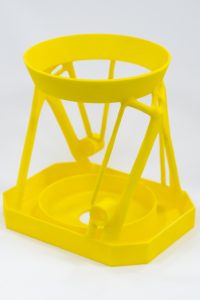
The solution: 25,000 filled toner bottles are distributed from the Ricoh UK Products Ltd factory every day. The toner bottles, distributed globally, are critical to machine function for Ricoh’s customers.
RPL uses jigs, or bottle pucks, to position the toner bottles in conveyance for leak testing in an automated process. Internal tooling is extremely cost sensitive and subject to one of Ricoh’s guiding principles: “super low cost manufacturing”. To achieve a significant cost reduction, without sacrificing Ricoh’s manufacturing standards, requires technological innovation and creativity to change or re-engineer business processes.
When new tooling was required at the bottling plant, the company looked at ways to strip out unnecessary material and reduce product changeover time, weight and, most importantly, cost. Each toner bottle product originally had its own bespoke bottle puck design, consisting of a total number of 20 jigs for each product. This meant that when the line was changed for a different product, the pucks had to be removed and stored. Ricoh 3D saw an opportunity to use 3D printing to optimise the design to cut this changeover time, reduce the weight of the pucks and therefore extend the conveyor life.
First, the team was able to incorporate three blow moulded jigs into one, with interchangeable size inserts using FDM printing, allowing a range of toner bottles to be leak tested at one station.
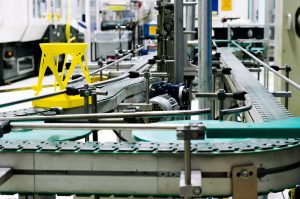
The revised 3D printed bottle puck produced multiple benefits, including a significant reduction in weight due to the sparse honeycomb internal structure created by Fused Deposition Modelling (FDM). However, this first iteration was designed purely in CAD without any FEA analysis so the solution remained typically over-engineered, with a uniform and symmetrical shape.
The team knew this improvement could be pushed even further with design optimisation, which uses complex software to create generative designs that meet or exceed parameters for strength and performance.
The CNC machined, and even 3D printed, puck was ultimately limited to geometric engineering and what could be conceived by the individual designer. Given the demanding production environment, it was essential to guarantee performance using FEA analysis and have a robust Factor of Safety built in. The known load and weight factors were applied for FEA analysis, to generate the least amount of material and cost possible via design optimisation, whilst building in a X4 Factor of Safety.
In total, each puck weight was reduced by 94% from 3.2kg with CNC machining, to 380g with the initial 3D printed model and finally 203g when optimised – producing a 56% cost saving.
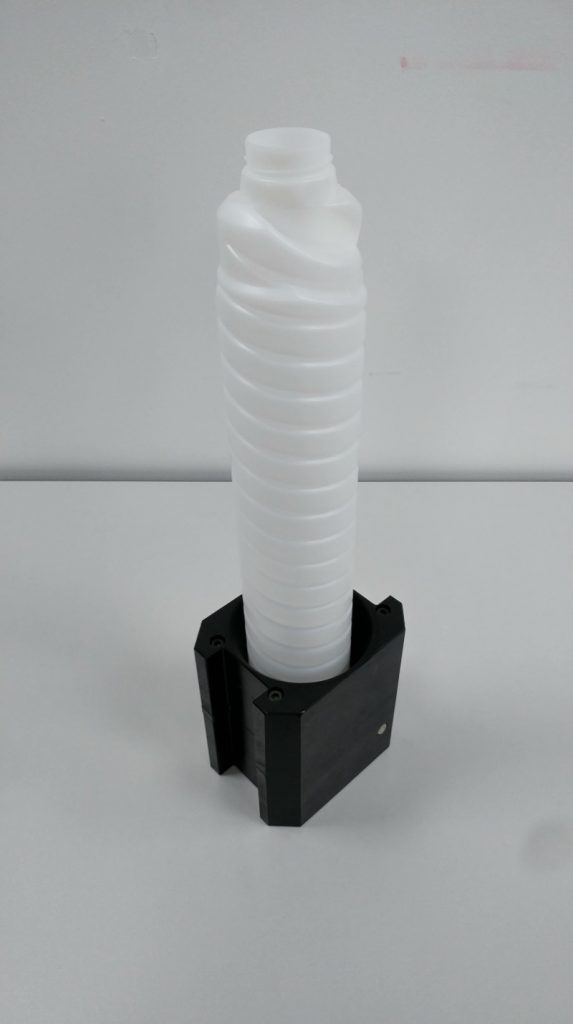
CNC Machined Bottle Puck 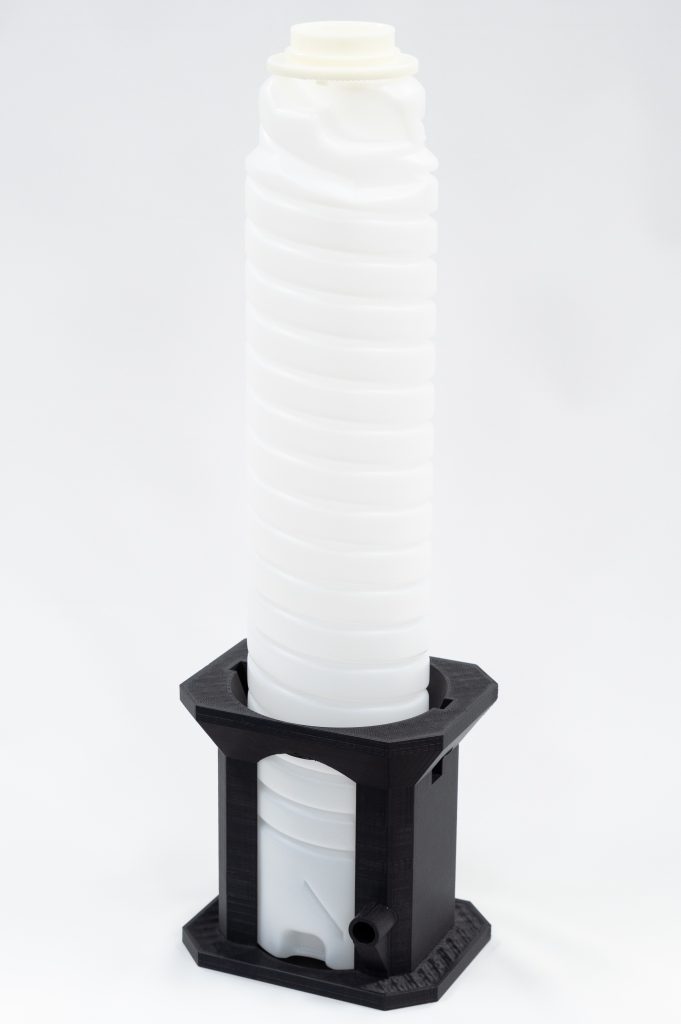
3D Printed Bottle Puck 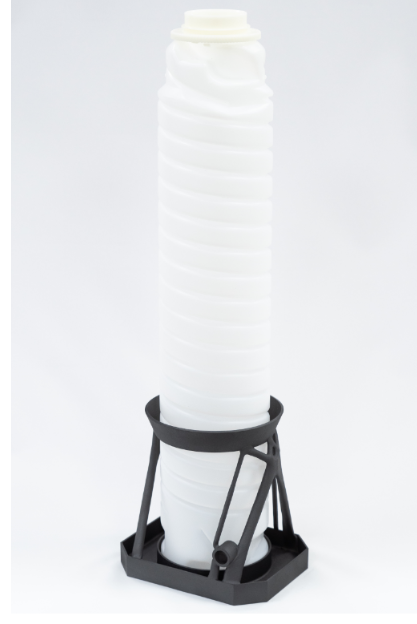
Optimised Bottle Puck
Philip Greatrex, Senior Moulding Engineer, said: “The incorporation of three jigs into one reduces product changeover time by 20 minutes, which is equivalent to an additional £24k every month in sales volume, not to mention the reduced manual handling risk from lifting the old heavy jigs off the belt into storage. We now only have to move light inserts during tool change, that’s a big win for us that’s hard to quantify.”
The weight reduction also means more bottles can be processed at one time, due to the reduced strain on the conveyor system and equipment energy saving. These factors ultimately led to an increased production yield from 80% to 99.3% in a similar timeframe. In addition, design optimisation has been a key tool in driving greener manufacturing, by only using the minimum material required.
Overall, this was an excellent example of production line innovation and how design optimisation in particular can help achieve maximum part performance and efficiency.